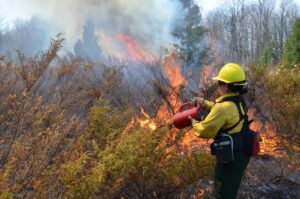The National Archery in the Schools Program (NASP) promotes instruction in international-style target archery as part of the in-school curriculum to improve educational performance and participation in shooting sports among students in grades 4-12. Andy Kaetzel has been principal at two different school and had excellent success. “Our children quality for the state contest almost every year and have gone to the national competition on two occasions,” he says proudly. “Although the program begins officially in grade 4, we purchased Nerf bows for younger students, and they love it.”
Safe and Fun for School Kids
NASP lessons are oriented toward target archery which is widely accepted as a safe, wholesome, and noncontroversial discipline. Founders designed the program so young people everywhere, whether urban or rural, could learn archery skills and decide on their own how and where to apply those skills. The program has specific safety rules at the target line and while retrieving arrows.
Follow the Rules
What’s being taught or promoted in public schools is highly scrutinized and, in some cases, controversial. Just as a young person’s first job is a learning experience, so is their first organized sport. The NASP program has hard-and-fast rules for safety, enjoyment, and success. To succeed, youngsters need to pay attention, do as they are instructed, and demonstrate that lessons are understood. WOW! This is teaching.
The Most Inclusive of All Sports
Most sports favor a particular body type. That is, tall for basketball, large for football, lanky for soccer, and so forth. Arrows show no preference. A child can be tall or short, thin or stout, nimble or not-so-much, or confined to a wheelchair. The equipment used in NASP is designed so that anyone can use it successfully.
Discipline of Mind and Body
This image shows the size and scope of a state archery championship. Once underway, there will be children standing in front of every target to demonstrate their skill. Given the chao demonstrated by young people in some large group gatherings, one might question the safety of such a huge undertaking. The challenge is large, but the archery program exceeds all expectations. Participants must embrace discipline of mind and body and demonstrate they can succeed with each opportunity.



























































